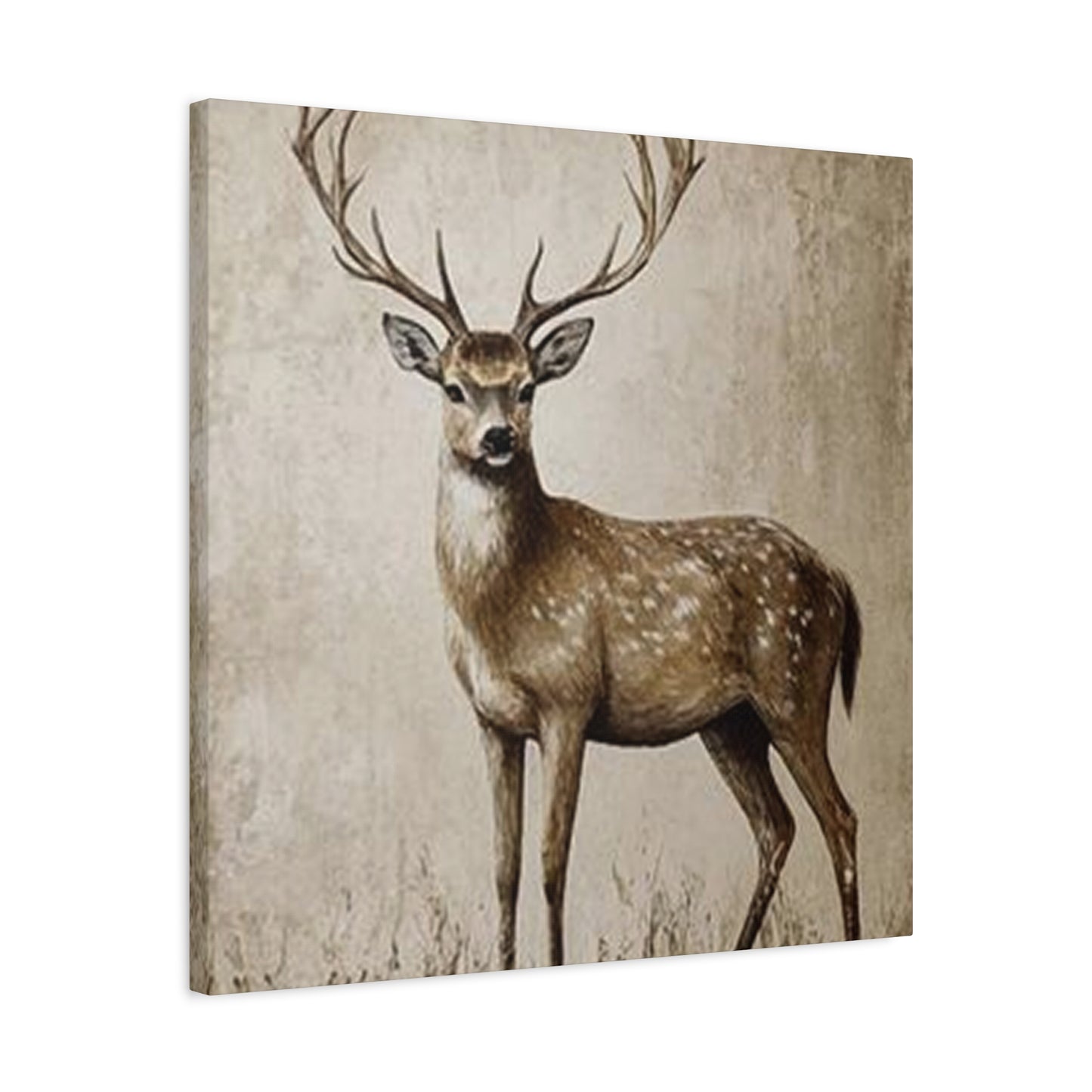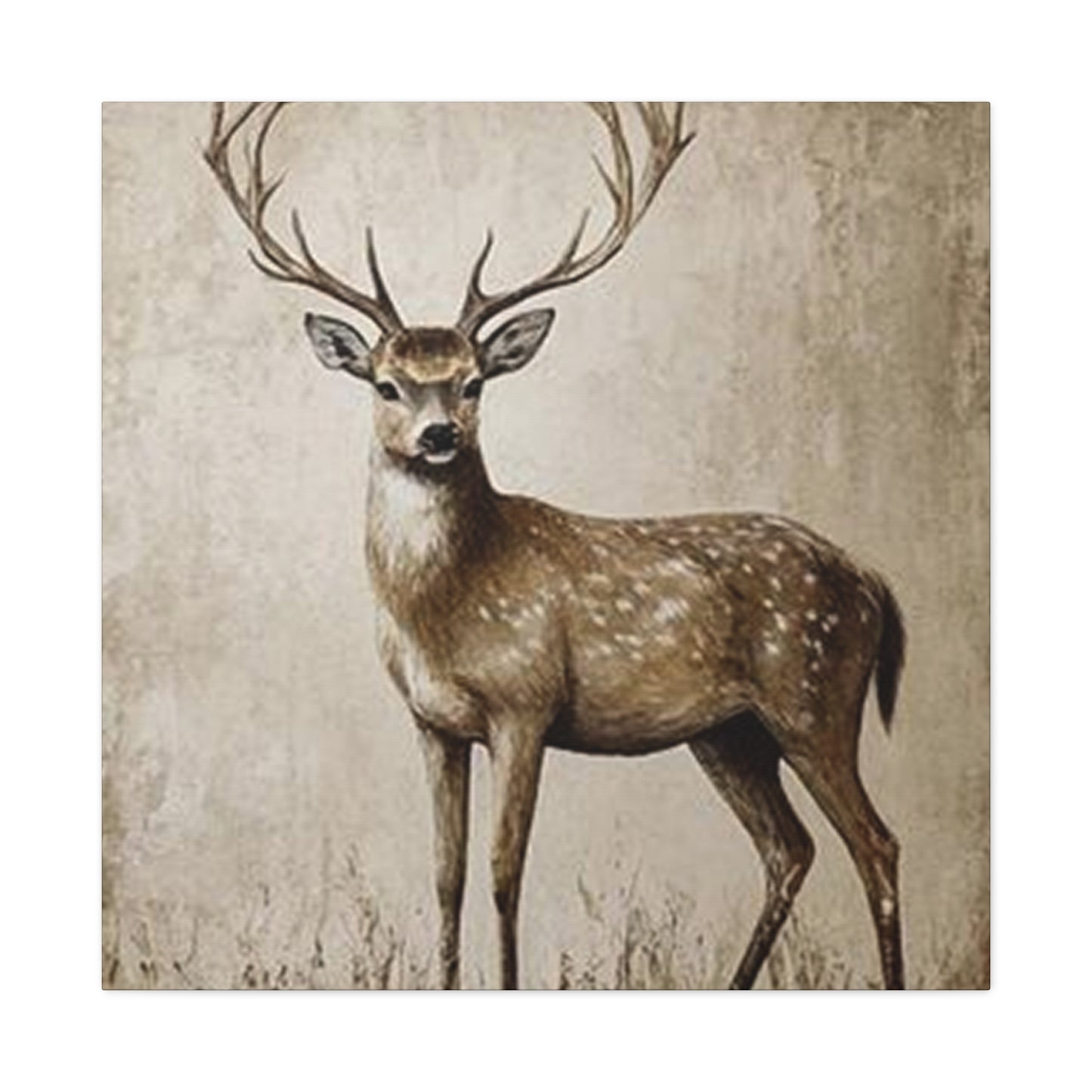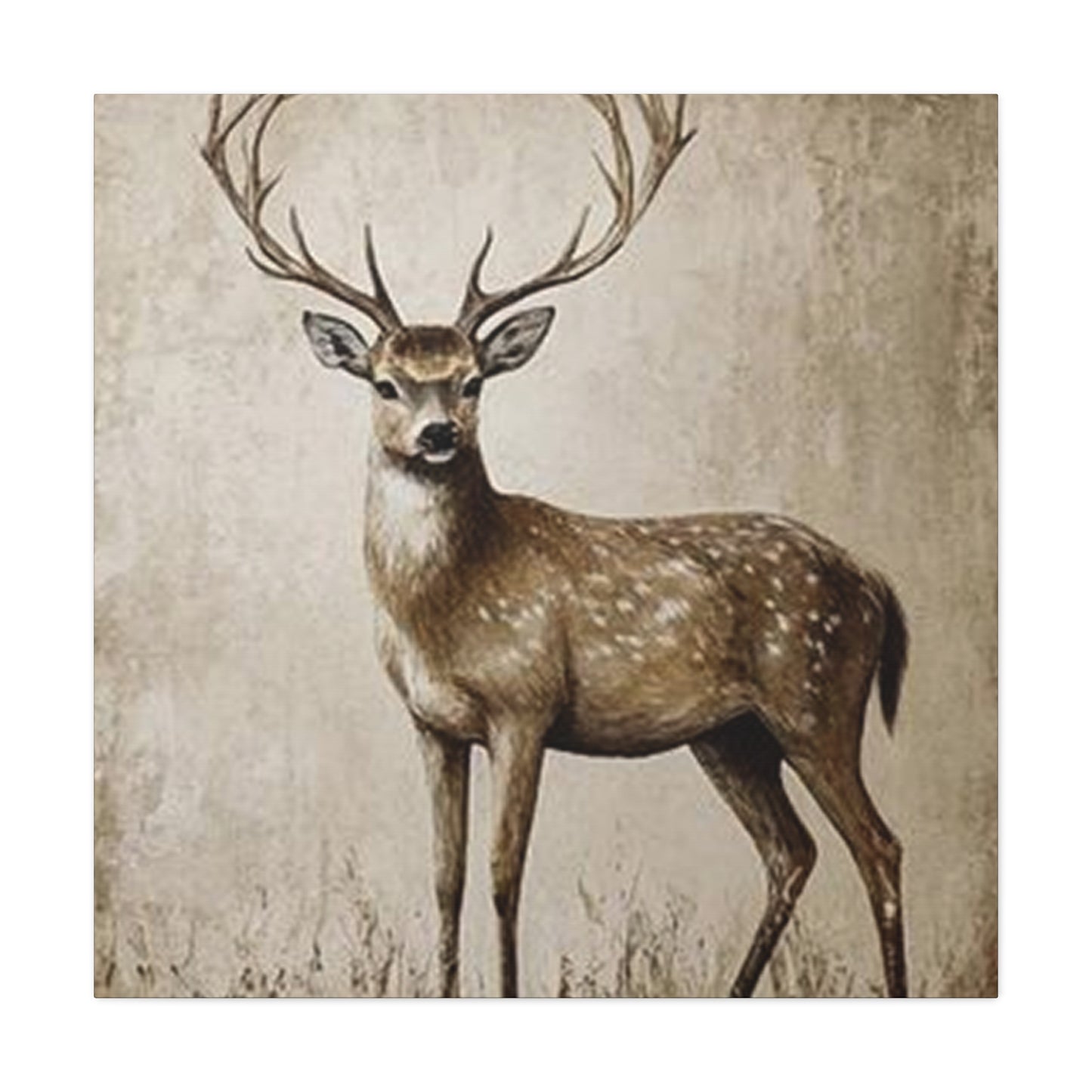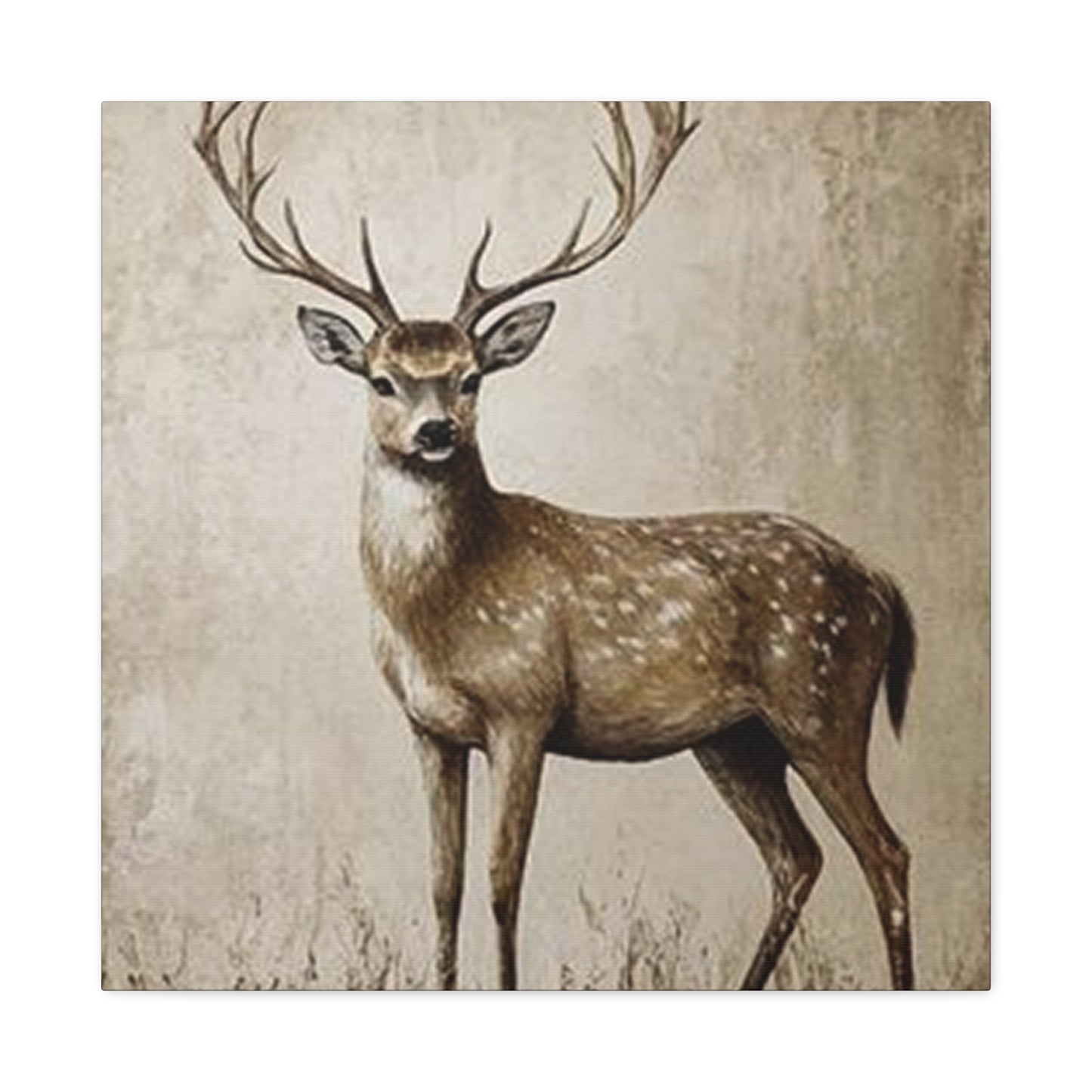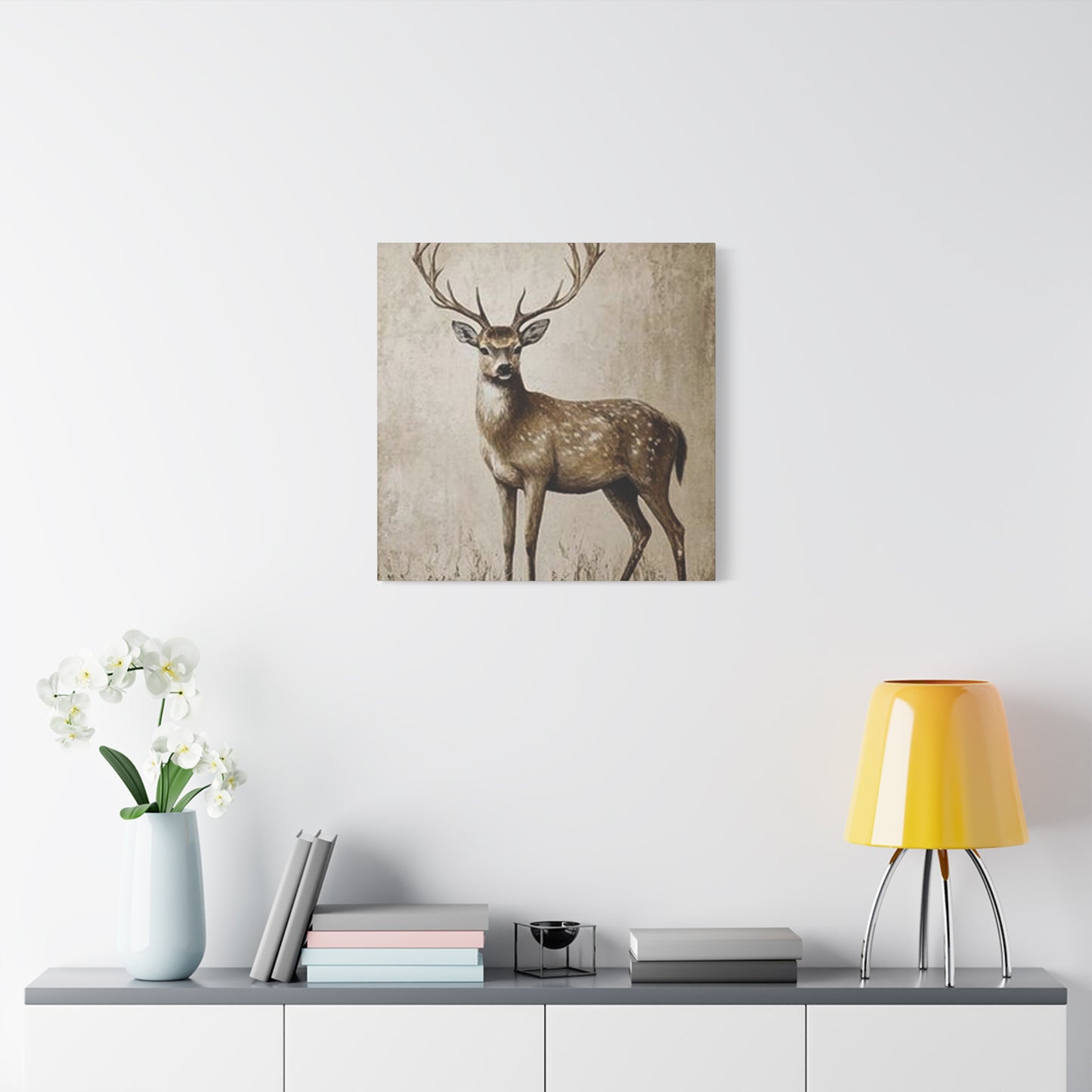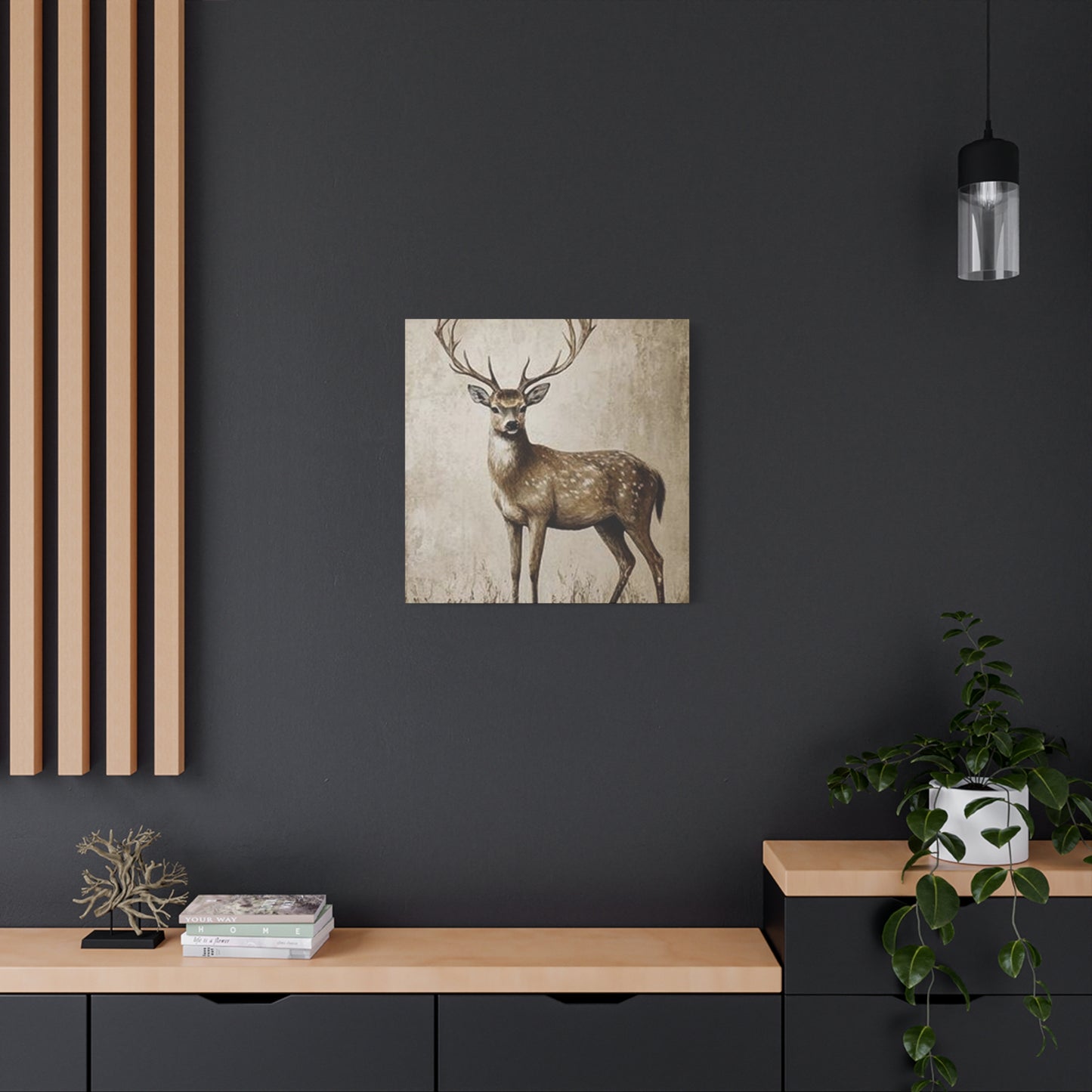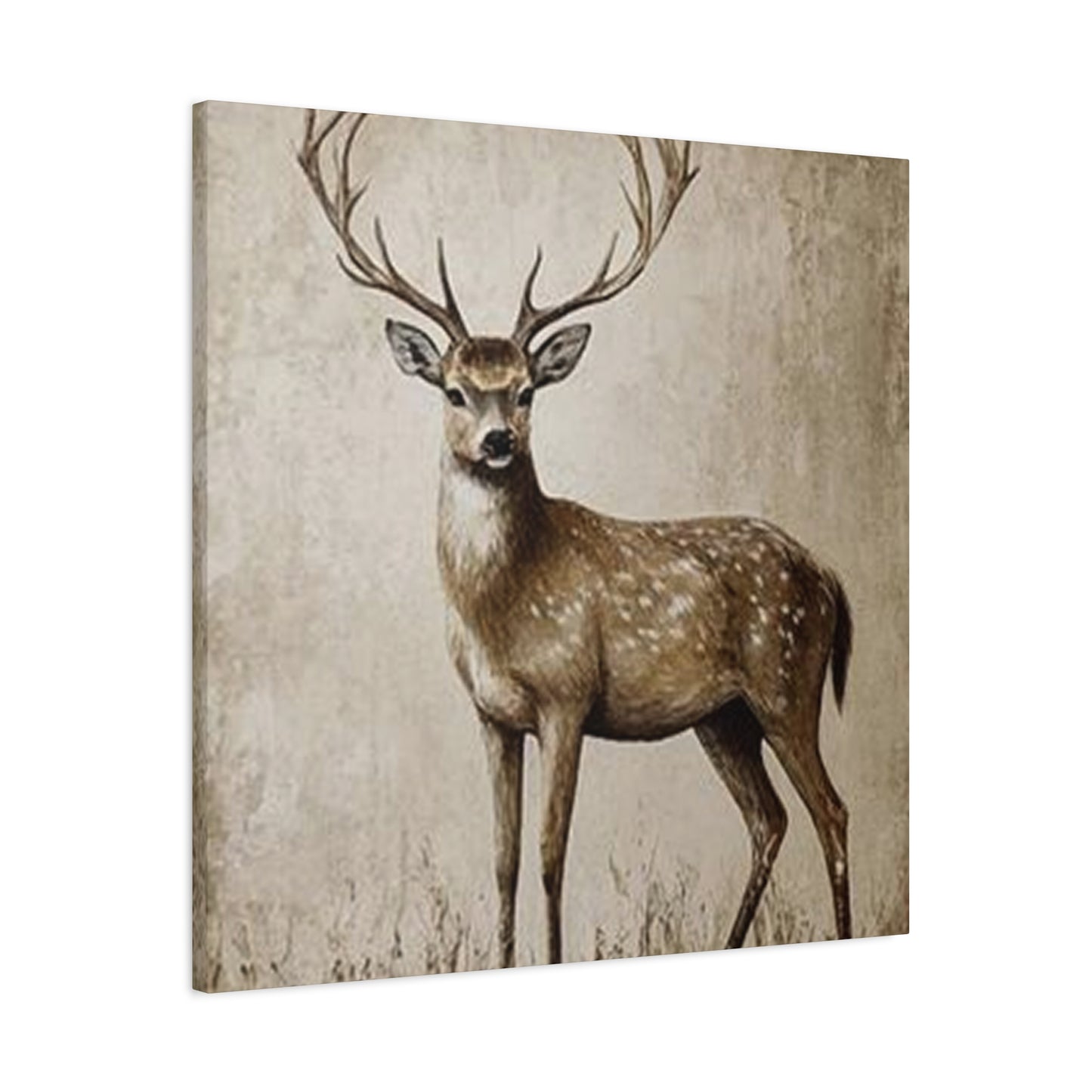Baby Reindeer Painting Wall Art & Canvas Prints
Baby Reindeer Painting Wall Art & Canvas Prints
Couldn't load pickup availability
Adorable Baby Reindeer Painting Wall Art: Creating Enchanting Nordic-Inspired Spaces for Modern Living Environments
Transforming living spaces with captivating imagery has become an essential aspect of contemporary interior design, and few subjects capture hearts quite like the innocent charm of young woodland creatures. Among these delightful themes, baby reindeer painting wall art stands out as a particularly enchanting choice that brings warmth, whimsy, and natural beauty into any room. These artistic representations of young caribou, with their gentle eyes and delicate features, have surged in popularity across homes, nurseries, and commercial spaces worldwide.
The appeal of baby reindeer artwork extends far beyond mere decoration. These pieces embody a connection to pristine wilderness, evoke feelings of tenderness and protection, and create focal points that spark conversation while maintaining a serene atmosphere. Whether rendered in watercolor softness, bold acrylic strokes, or minimalist line drawings, baby reindeer paintings offer versatility that complements diverse aesthetic preferences from Scandinavian minimalism to rustic farmhouse charm.
The Enduring Fascination With Young Caribou Imagery in Contemporary Decorative Arts
The cultural significance of reindeer stretches back millennia, deeply rooted in Arctic and sub-Arctic indigenous traditions where these magnificent creatures represented survival, abundance, and spiritual connection to the natural world. Young reindeer, or calves, hold particular symbolic weight across various cultures, representing new beginnings, innocence, resilience, and the cyclical nature of life in harsh yet beautiful landscapes.
In contemporary visual culture, baby reindeer have transcended their traditional contexts to become beloved subjects in artistic expression. This shift reflects broader societal trends toward biophilic design—the incorporation of natural elements into built environments to enhance well-being. The gentle, non-threatening appearance of reindeer calves makes them particularly suitable for spaces designed for relaxation, reflection, and emotional comfort.
The seasonal associations with reindeer, particularly during winter months and festive periods, have also contributed to their sustained popularity. However, modern interpretations have successfully extended their appeal year-round by emphasizing the universal qualities of youth, vulnerability, and natural beauty rather than solely holiday connections. Artists worldwide have embraced baby reindeer as subjects that allow exploration of texture, light, emotion, and environmental themes while maintaining broad commercial and aesthetic appeal.
From a psychological perspective, images of young animals trigger nurturing instincts and positive emotional responses in viewers. Scientific research has demonstrated that viewing such imagery can reduce stress hormones, lower blood pressure, and induce states of calm alertness. These benefits make baby reindeer painting wall art not merely decorative but potentially therapeutic additions to living and working environments.
Selecting the Perfect Baby Reindeer Painting Wall Art for Your Distinctive Living Space
Choosing artwork that resonates with your personal aesthetic while complementing existing décor requires thoughtful consideration of multiple factors. The first consideration involves assessing the overall style of your space. Scandinavian-inspired interiors with clean lines, neutral palettes, and natural materials pair beautifully with minimalist reindeer illustrations featuring simple forms and limited color schemes. These pieces typically employ muted tones—soft grays, warm taupes, gentle creams, and subtle blues—that harmonize with the understated elegance characteristic of Nordic design.
For spaces embracing rustic or farmhouse aesthetics, baby reindeer paintings with more textured appearances work exceptionally well. Look for pieces that incorporate visible brushstrokes, layered paint applications, or mixed media elements combining paint with natural materials like burlap, wood grain textures, or metallic accents. These artworks should evoke the handcrafted quality and organic warmth that define rustic interiors, with color palettes drawing from earth tones, weathered wood hues, and oxidized metal shades.
Contemporary and modern spaces benefit from baby reindeer artwork that takes creative liberties with representation. Abstract interpretations, geometric stylizations, or pieces incorporating unexpected color combinations can serve as striking focal points while maintaining the recognizable silhouette and essence of the young caribou. Consider works featuring bold contrasts, unconventional perspectives, or integration with architectural elements within the composition itself.
Size considerations prove equally crucial in selection processes. Large-scale pieces command attention and work best as primary focal points above substantial furniture pieces like sofas, beds, or sideboards. Medium-sized artworks offer flexibility for gallery wall arrangements or secondary focal points in hallways, dining areas, or bedroom walls. Smaller pieces suit intimate spaces, shelving displays, or clustered arrangements that create visual interest through repetition and variation.
The framing and mounting options significantly impact the final presentation. Floating frames create contemporary sophistication by suspending artwork between glass panels, casting subtle shadows that add dimensional depth. Traditional wooden frames in natural finishes complement rustic and transitional spaces, while sleek metal frames in matte black, brushed gold, or polished silver suit modern environments. Canvas wraps—where the image continues around the edges—eliminate framing needs entirely, offering clean, streamlined presentations perfect for minimalist spaces.
Color palette compatibility ensures seamless visual flow between artwork and surrounding elements. Baby reindeer paintings come in remarkable variety, from monochromatic charcoal sketches to vibrant watercolor explosions. Analyze your existing color scheme and determine whether you want artwork that blends harmoniously or provides deliberate contrast. Harmonious selections pick up accent colors already present in textiles, accessories, or architectural features, creating cohesive visual narratives. Contrasting choices introduce new color elements that energize spaces and draw the eye, requiring careful balance to avoid visual discord.
Material considerations extend beyond the painting surface itself. Original artworks on canvas, wood panels, or watercolor paper carry unique value and texture that reproductions cannot fully replicate. High-quality giclée prints on archival paper or canvas offer accessibility to acclaimed works while maintaining excellent visual fidelity. Metal prints provide contemporary alternatives with exceptional durability, vibrant colors, and unique luminosity. Acrylic prints deliver similar benefits with lighter weight and different reflective qualities that suit specific lighting conditions.
Diverse Artistic Styles and Rendering Methods for Baby Reindeer Painting Wall Art
The versatility of baby reindeer as artistic subjects has inspired creators working across the full spectrum of visual styles and mediums. Understanding these variations helps collectors and decorators identify pieces that truly resonate with their aesthetic sensibilities and spatial requirements.
Watercolor renderings of baby reindeer capture ethereal delicacy through translucent layers and soft color transitions. These pieces often feature gentle bleeding of pigments, creating dreamlike atmospheres particularly suited to nurseries, bedrooms, and meditation spaces. Watercolor techniques allow artists to emphasize the soft, fuzzy texture of reindeer calf fur through varied brush techniques and strategic water-to-pigment ratios. The luminous quality inherent to watercolor paintings brings lightness and airiness to spaces, making them feel more expansive and serene.
Oil paintings offer richness and depth impossible to achieve with other mediums. The slow-drying nature of oil paints enables extensive blending and layering, resulting in remarkably lifelike representations of baby reindeer with nuanced fur textures, realistic lighting effects, and atmospheric depth. Traditional oil techniques create timeless artworks that suit classic, traditional, and luxury interior designs. These pieces often command higher prices due to the time-intensive processes involved and the enduring value of original oil works.
Acrylic paintings provide the visual impact of oils with faster drying times and greater versatility. Artists working in acrylics can achieve everything from transparent watercolor effects to thick, textured impasto applications within single pieces. Baby reindeer rendered in acrylics often feature bold colors, strong contrasts, and dynamic compositions that energize contemporary spaces. The quick-drying nature facilitates layered techniques and experimental approaches that push creative boundaries.
Digital artworks and illustrations have revolutionized accessibility to baby reindeer painting wall art. Talented digital artists create stunning pieces using tablets and sophisticated software, producing works that can be reproduced without quality loss. Digital creations range from photorealistic renderings indistinguishable from traditional paintings to stylized illustrations with distinctive graphic qualities. The reproducibility of digital works makes premium designs available to broader audiences at accessible price points.
Mixed media pieces incorporate multiple materials and techniques within single artworks, creating unique textural and visual interest. These works might combine painted reindeer forms with collaged natural elements, metallic leafing, fabric integrations, or three-dimensional components that extend beyond flat surfaces. Mixed media baby reindeer art particularly suits eclectic interiors and spaces celebrating creativity and individuality.
Line art and minimalist illustrations strip baby reindeer imagery to essential elements, using economical marks to capture form, character, and essence. These sophisticated pieces work exceptionally well in modern, Scandinavian, and minimalist interiors where visual restraint and negative space hold equal importance to rendered elements. The simplicity of line-based reindeer art allows it to complement rather than compete with surrounding décor while maintaining strong visual presence.
Photorealistic paintings demonstrate technical virtuosity by recreating baby reindeer with such precision they appear photographic. These works showcase extraordinary attention to detail in fur texture, eye reflections, lighting subtleties, and environmental contexts. Photorealistic baby reindeer paintings appeal to those who appreciate technical mastery and want artwork that captures nature's beauty with scientific accuracy.
Abstract interpretations liberate baby reindeer from literal representation, using suggestion, gesture, and artistic liberty to evoke the essence of these young creatures. Color, form, and composition take precedence over accurate depiction, resulting in emotionally evocative pieces that engage viewers through feeling rather than recognition. Abstract baby reindeer art suits adventurous collectors and spaces where artwork serves as primary design statements rather than complementary elements.
Strategic Placement Approaches for Maximizing Visual Impact Throughout Various Rooms
The location where you display baby reindeer painting wall art dramatically influences both its visual effectiveness and the atmosphere it creates. Strategic placement considers viewing angles, lighting conditions, spatial flow, and functional requirements of different rooms.
Living rooms serve as primary gathering spaces where artwork significantly shapes overall ambiance. Baby reindeer paintings positioned above seating arrangements become natural focal points during conversations and relaxation. Consider hanging pieces at eye level when seated, typically 56-60 inches from floor to artwork center, ensuring comfortable viewing from primary seating positions. For arrangements above sofas, maintain 6-8 inches of space between furniture top and frame bottom, creating visual connection without crowding. Large living rooms accommodate substantial single pieces or curated gallery walls featuring multiple baby reindeer artworks in varied sizes and styles, creating layered visual narratives.
Bedrooms benefit from the calming presence of baby reindeer imagery, particularly when placed on walls visible from resting positions. Artwork above headboards creates traditional focal points while maintaining sightlines that don't disturb sleep. Alternative placements on walls opposite beds ensure artwork becomes the first image seen upon waking, setting peaceful tones for beginning days. Bedroom lighting tends toward softer intensities, making matte finishes and less reflective materials preferable to glossy surfaces that might create glare during evening hours.
Nurseries and children's rooms represent ideal environments for baby reindeer painting wall art, where the gentle subject matter supports developmental needs and creates nurturing atmospheres. Place pieces at adult eye level rather than child height to maintain proper proportion as children grow. Ensure secure mounting with appropriate hardware, particularly in rooms with active young children. Consider baby reindeer artworks featuring educational elements like seasonal landscapes, other woodland creatures, or subtle counting elements that combine aesthetic appeal with learning opportunities.
Dining areas welcome baby reindeer art that complements gathering and nourishment rituals. Pieces positioned on walls adjacent to tables rather than directly behind seating allow all diners to appreciate them without neck strain. The subject matter's gentle nature supports relaxed dining experiences without distracting from food presentation or conversation. Consider how dining room lighting—often featuring statement fixtures—interacts with artwork placement, avoiding positions where light sources create unwanted reflections or shadows.
Home offices and study spaces benefit from baby reindeer imagery's stress-reducing qualities, offering visual respites during intensive work periods. Position artwork within comfortable viewing range from desk positions, allowing brief contemplative breaks that refresh mental focus. Avoid placing pieces where screen glare might reflect onto artwork or where artwork reflections might appear on computer monitors. The calming presence of baby reindeer paintings can help define home offices as distinct from purely utilitarian workspaces, supporting work-life balance even when professional and domestic realms share physical locations.
Hallways and transitional spaces provide excellent opportunities for baby reindeer painting wall art that might feel overwhelming in smaller, enclosed rooms. Long corridors accommodate series of related pieces creating gallery-style presentations that transform purely functional spaces into curated experiences. Proper spacing between multiple pieces—typically 2-6 inches depending on frame sizes and style formality—maintains visual cohesion while allowing individual appreciation of each work.
Bathrooms, particularly powder rooms and master suites, increasingly feature artwork that extends design consideration to every space. Baby reindeer paintings in bathrooms require careful material selection, favoring canvas or metal prints over paper-based works vulnerable to moisture damage. Placement away from direct water exposure and in well-ventilated areas protects investments while bringing unexpected delight to utilitarian spaces.
Entryways and foyers make powerful first impressions with carefully selected artwork. Baby reindeer paintings in these spaces communicate warmth, thoughtfulness, and aesthetic values to visitors immediately upon arrival. Console tables topped with complementary decorative objects create layered vignettes that anchor artwork while providing dimensional interest. Lighting in entries often differs significantly from interior rooms, requiring attention to how natural light from nearby doors or artificial lighting from statement fixtures interacts with chosen pieces.
Color Psychology and Palette Selection in Baby Reindeer Painting Wall Art
The colors predominating in baby reindeer artwork significantly influence emotional responses and spatial perceptions, making palette selection worthy of careful consideration beyond mere aesthetic preference.
Neutral palettes featuring grays, taupes, creams, and soft browns dominate baby reindeer painting wall art, reflecting both the natural coloration of these creatures and contemporary design preferences for versatile, timeless color schemes. These neutral-based pieces integrate seamlessly into virtually any color environment while providing subtle warmth that prevents spaces from feeling cold or sterile. Gray-toned baby reindeer paintings range from cool blue-grays that evoke northern climates to warm charcoal shades with brown undertones that create cozier atmospheres. Cream and ivory-based pieces brighten spaces while maintaining softness that harsh whites cannot achieve.
Blue-accented baby reindeer artworks introduce serenity and spatial expansion, particularly when featuring soft sky blues, dusty denim shades, or deep navy tones. Blue registers psychologically as calming and trustworthy, making these pieces particularly suitable for bedrooms, bathrooms, and spaces designed for relaxation. Artists often incorporate blue through background washes suggesting winter skies, subtle shading in fur that catches cool light, or abstract color fields that complement naturalistic reindeer renderings. Icy blue tones evoke winter landscapes and Nordic environments, while warmer blue-grays suggest twilight hours and transitional seasons.
Green elements within baby reindeer paintings connect to growth, renewal, and natural environments. Forest greens suggest woodland habitats, while sage and eucalyptus tones align with contemporary color trends and create sophisticated, organic palettes. Olive and moss greens provide earthiness that grounds compositions and pairs beautifully with natural wood tones in furniture and architectural elements. Green-accented baby reindeer art works particularly well in spaces incorporating plants, natural fibers, and biophilic design principles.
Warm earth tones including terracotta, rust, ochre, and burnt sienna introduce energy and coziness to baby reindeer paintings while maintaining natural authenticity. These colors reference autumn landscapes, setting suns, and the warmth of sheltered spaces against cold climates. Rust and terracotta tones gained prominence in recent design trends, making baby reindeer art incorporating these hues particularly contemporary while maintaining timeless appeal through their natural origins.
Metallic accents in gold, copper, bronze, or silver elevate baby reindeer paintings from purely representational to luxurious statement pieces. Gold leafing around antler formations or as background elements creates opulence without overwhelming gentle subject matter. Copper tones provide warmth and contemporary sophistication, particularly popular in modern farmhouse and industrial-influenced interiors. Silver and platinum accents suggest winter magic and pristine snowscapes while introducing cool sophistication.
Blush and rose tones soften baby reindeer paintings, making them particularly suitable for nurseries, feminine spaces, and environments prioritizing gentle romanticism. These colors maintain contemporaneity while offering warmth that pure neutrals sometimes lack. Dusty rose, mauve, and peachy blush tones complement the natural browns and creams of reindeer coloring beautifully, creating cohesive palettes that feel intentional yet effortless.
Bold, unexpected color choices transform baby reindeer into vehicles for artistic expression beyond naturalistic representation. Jewel tones like emerald, sapphire, amethyst, or ruby backgrounds create dramatic contrasts with neutral reindeer forms, producing contemporary artworks suitable for spaces embracing color confidence. Neon accents, gradient rainbows, or surrealistic color applications appeal to collectors seeking unique statement pieces that challenge conventional wildlife art expectations.
Monochromatic schemes using single colors in varied saturations and values create sophisticated, cohesive artworks with strong visual impact. Sepia-toned baby reindeer paintings evoke vintage photographs and nostalgic warmth. Black and white renderings emphasize form, contrast, and composition while offering maximum versatility across color schemes. All-blue or all-green pieces create immersive color experiences that can anchor entire room palettes.
Crafting Cohesive Gallery Wall Arrangements Featuring Baby Reindeer Painting Wall Art
Gallery walls transform single artworks into curated collections that make bold design statements while showcasing personal style and creating dynamic visual interest. Successfully incorporating baby reindeer painting wall art into gallery arrangements requires balancing unity and variety.
Thematic coherence provides the foundation for effective gallery walls. Collections centered entirely on baby reindeer in various artistic interpretations create focused narratives celebrating this specific subject through diverse lenses. Alternatively, baby reindeer pieces can anchor broader wildlife themes incorporating other young animals, woodland creatures, or nature-inspired imagery that shares stylistic or tonal qualities. Seasonal themes position baby reindeer alongside winter landscapes, pine forests, or festive imagery that expands storytelling beyond single subjects.
Layout planning prevents the random, haphazard appearance that undermines gallery wall effectiveness. Symmetrical grid arrangements suit formal spaces and traditional aesthetics, positioning pieces in aligned rows and columns with consistent spacing. This approach works best when using similarly sized frames and maintaining uniform orientation—all landscape, all portrait, or all square. Asymmetrical salon-style arrangements offer more creative freedom, mixing sizes, orientations, and frame styles while maintaining overall visual balance. Successful asymmetrical layouts often start with a central anchor piece—perhaps a large baby reindeer painting—with smaller works radiating outward in balanced compositions.
Frame selection significantly impacts gallery wall cohesion. Matching frames in identical styles, materials, and colors create uniformity that allows artwork to shine without distraction. This approach suits collections where the artworks themselves vary in style, color, or subject matter, as consistent framing provides unifying structure. Alternatively, varied frames unified by consistent color families—all natural woods, all black, all metallics—create interest while maintaining cohesion. Completely eclectic frame selections work only when artwork shares strong stylistic consistencies or when intentional maximalism defines the overall aesthetic.
Spacing between pieces requires careful calibration. Standard gallery wall spacing ranges from 2-4 inches between frames, creating distinct yet connected presentations. Tighter spacing of 1-2 inches produces more unified, cohesive appearances where individual pieces feel like components of larger installations. Wider spacing of 5-6 inches or more suits minimalist approaches and very large walls where breathing room prevents visual crowding.
Color distribution across gallery walls prevents awkward clustering of similar hues that create visual imbalance. If including multiple baby reindeer paintings with varied color palettes, distribute colors evenly rather than grouping all blue-toned pieces together or all warm-toned works in one area. This creates rhythmic flow that guides eyes naturally across entire arrangements rather than jumping between isolated color clusters.
Scale variation adds dynamism to gallery walls while preventing monotonous uniformity. Mix large statement pieces with medium and small works, ensuring the largest pieces anchor arrangements without overwhelming smaller neighbors. A common effective ratio incorporates one large piece, two to three medium works, and several smaller pieces, though exact proportions depend on available space and collection size.
Vertical and horizontal orientation mixing creates visual movement and prevents stagnant, predictable arrangements. Baby reindeer paintings in portrait orientation contrast beautifully with landscape pieces, particularly when aligned along consistent top, bottom, or center lines that create invisible structural grids underlying apparent asymmetry.
Three-dimensional elements like floating shelves, sculptural pieces, or botanical specimens add depth to gallery walls dominated by flat artworks. A small shelf displaying baby reindeer figurines or natural objects like pine cones, antlers, or crystals bridges the gap between wall-mounted art and room furnishings, creating integrated presentations rather than isolated wall decorations.
Lighting considerations ensure all pieces receive adequate illumination without glare, shadows, or color distortion. Picture lights mounted above individual pieces work well for formal, traditional galleries. Track lighting or adjustable spotlights offer flexibility for illuminating multiple pieces from single fixtures. Ambient room lighting suffices for casual gallery walls in well-lit spaces, though attention to avoiding glare on glass-covered pieces remains important.
Template creation before installation prevents costly holes from misplaced hardware. Trace each frame onto paper, cut out templates, and arrange them on walls with removable tape until achieving satisfactory layouts. Mark hanging hardware positions through paper, remove templates, install hardware, and hang framed works with confidence in pre-planned placements.
Pairing Baby Reindeer Painting Wall Art With Complementary Decorative Elements
Artwork rarely exists in isolation; its impact multiplies when thoughtfully coordinated with surrounding décor elements that enhance rather than compete with visual narratives.
Textile selections including throw pillows, blankets, and drapery offer opportunities to echo colors, textures, and themes from baby reindeer paintings. A painting featuring soft gray reindeer against cream backgrounds pairs beautifully with linen pillows in coordinating tones, perhaps with subtle pattern details suggesting Nordic geometry or natural textures. Faux fur throws in ivory or taupe tones reference reindeer coat textures while providing tactile comfort that complements visual softness. Curtains in sheer fabrics maintain lightness compatible with delicate artwork, while heavier wools or velvets suit more substantial, dramatic pieces.
Natural material accessories reinforce the organic, wilderness-inspired themes inherent in baby reindeer imagery. Wood elements—whether sculptural bowls, candle holders, or furniture pieces—in raw, minimally processed finishes create authentic connections to forest environments. Stone and mineral specimens displayed on nearby surfaces or shelving introduce geological elements from reindeer habitats. Dried botanicals including grasses, seed pods, or preserved branches bring literal nature indoors, bridging painted representations with actual organic materials.
Lighting fixtures influence how baby reindeer painting wall art appears throughout different times of day while contributing to overall aesthetic cohesion. Pendant lights in organic shapes—woven rattan, carved wood, or sculptural metals—complement nature-inspired artwork without literal matching. Table lamps with ceramic bases in reactive glazes suggest natural patinas and complement earthy painting palettes. Warm-toned LED bulbs (2700-3000K) create ambiance that enhances warm neutrals common in baby reindeer art, while cooler bulbs (4000-5000K) suit pieces emphasizing winter scenes and cool palettes.
Furniture selections provide crucial context for artwork display. A mid-century modern credenza with clean lines and natural wood grain creates sophisticated simplicity that allows baby reindeer paintings to command attention. Rustic benches with visible wood grain and simple constructions complement artwork in similar styles. Upholstered pieces in natural fiber fabrics—linens, cottons, wools—maintain organic themes, while leather furnishings in camel, cognac, or chocolate tones echo the warm browns present in much baby reindeer art.
Sculptural objects and figurines extend baby reindeer themes three-dimensionally. Small ceramic or wooden reindeer figurines grouped on mantels, shelves, or side tables create curated vignettes connecting with wall-mounted paintings. However, restraint prevents overly themed spaces that feel contrived; one or two sculptural references typically suffice, allowing the painting itself to anchor the theme.
Metallic accents in hardware, frames, and accessories should coordinate with any metallics present in artwork. Gold tones in picture frames pair with brass or gold-finished lamps, cabinet pulls, and decorative objects. Silver frames coordinate with chrome, nickel, or platinum accessories. Mixed metal approaches work only when artwork itself successfully combines multiple metallic tones.
Plant selections bring living nature into spaces celebrating painted wildlife. Potted evergreens reference boreal forests where reindeer dwell, while more tropical plants create interesting juxtapositions if seeking eclectic rather than matchy approaches. Eucalyptus, olive trees, ferns, and various grasses work particularly well with baby reindeer artwork, their muted greens and organic forms complementing rather than overwhelming neutral-toned paintings.
Books and printed materials displayed on coffee tables or shelving can reinforce themes through subject matter about wildlife, wilderness, Nordic cultures, or natural history. These need not be obvious or heavy-handed; a beautiful photography book about Scandinavian landscapes or a collection of nature poetry subtly reinforces the contemplative, nature-connected atmosphere baby reindeer artwork cultivates.
Flooring considerations affect how artwork reads within overall spaces. Light wood floors or pale carpeting create bright, airy foundations that allow artwork to pop against walls. Medium-toned woods provide warmth without heaviness. Dark floors create dramatic contrasts particularly effective with lighter baby reindeer paintings on pale walls, though balance requires ensuring spaces don't feel bottom-heavy or cave-like.
Sourcing Authentic and High-Quality Baby Reindeer Painting Wall Art
The marketplace for baby reindeer painting wall art spans from mass-produced prints to unique original creations, with quality, authenticity, and value varying dramatically across sources.
Independent artists represent the pinnacle of originality and authenticity, offering unique works created by single creators whose vision and skill directly translate to canvas, paper, or other mediums. Commissioning original baby reindeer paintings allows complete customization of size, palette, style, and compositional elements, resulting in truly one-of-a-kind pieces. Online platforms connecting artists with collectors have democratized access to talented creators worldwide, though evaluating artist credentials, reviewing portfolios, and understanding pricing structures requires due diligence. Original artworks command premium prices justified by their uniqueness, the direct connection to creating artists, and their potential appreciation in value.
Local art fairs, festivals, and markets provide opportunities to view baby reindeer paintings in person before purchasing while directly supporting regional creative communities. These venues enable conversations with artists about their processes, inspirations, and available works, creating meaningful connections that enhance the emotional value of acquired pieces. Local galleries, particularly those specializing in wildlife or nature-inspired art, curate selections representing quality standards and often provide certificates of authenticity, framing services, and collecting guidance.
Online marketplaces specializing in handmade and artistic goods offer vast selections of baby reindeer painting wall art at varied price points. These platforms typically verify seller authenticity and facilitate secure transactions, though buyers must carefully review product descriptions, materials specifications, and customer reviews. Print-on-demand services available through some platforms allow artists to offer reproductions of their work at accessible prices while maintaining some creative input over final products. However, quality varies significantly depending on printing methods, materials, and color management processes.
Home décor retailers increasingly stock baby reindeer artwork as the subject's popularity has grown. These sources offer convenience, competitive pricing, and easy returns, though selections typically feature reproductions rather than originals and may lack uniqueness that defines truly special pieces. Higher-end home furnishing stores curate better quality reproductions and occasionally carry original works by emerging artists, occupying a middle ground between mass market and fine art gallery offerings.
Limited edition prints offer compromise between original artwork exclusivity and reproduction accessibility. Artists create predetermined quantities of high-quality reproductions—often giclée prints—that they sign and number, with plates or digital files destroyed after the edition completes. Limited editions maintain collectible value while allowing multiple collectors to own works by admired artists. Documentation proving edition authenticity and artist signatures significantly affects both immediate pricing and long-term value.
Photography-based baby reindeer art constitutes its own category where the camera rather than paintbrush captures subject matter. Wildlife photographers specializing in Arctic and sub-Arctic regions produce stunning images of actual baby reindeer in natural habitats. These photographs, when printed on fine art papers or canvas using archival processes, offer different aesthetic qualities than paintings while maintaining artistic merit. Limited edition photography prints can appreciate in value similarly to other fine art.
Interior design studios and decorating services often maintain relationships with artists and suppliers, providing access to exclusive or trade-only sources. For those undertaking comprehensive room redesigns, designers can source baby reindeer artwork specifically suited to overall design concepts, ensuring perfect scale, palette, and stylistic alignment while leveraging industry connections and expertise.
Auction houses and estate sales occasionally feature baby reindeer paintings, particularly older or vintage works. These venues require more specialized knowledge to navigate successfully but can yield exceptional pieces at favorable prices. Online auction platforms have made this market more accessible, though careful authentication remains crucial when purchasing art through competitive bidding environments.
Rental programs offered by some galleries and art services allow households to rotate artworks periodically, maintaining fresh visual interest without permanent commitment. These programs particularly benefit those unsure about long-term style preferences or living in temporary housing. Some rental agreements include purchase options, applying rental payments toward eventual acquisition of pieces renters decide they cannot live without.
Seasonal Adaptations and Year-Round Relevance of Baby Reindeer Painting Wall Art
While reindeer naturally associate with winter and particular holiday seasons, thoughtfully selected baby reindeer painting wall art maintains relevance and visual appeal throughout entire years without feeling seasonally discordant.
The key to year-round appropriateness lies in artistic approach and contextual elements within paintings. Baby reindeer rendered against neutral backgrounds—soft grays, creams, or minimal watercolor washes—lack seasonal specificity, focusing instead on the subject's inherent beauty and character. These pieces work equally well in July and December, their appeal transcending temporal associations.
Spring-appropriate baby reindeer paintings might incorporate fresh green tones, suggesting new growth and renewal naturally aligned with spring themes. Reindeer calves are actually born in spring, making May and June biologically accurate times to feature them regardless of cultural holiday associations. Artwork depicting baby reindeer in flowering meadows, with soft pastel palettes, or against backgrounds suggesting melting snow and emerging landscapes perfectly suits springtime décor.
Summer adaptations prove more challenging given reindeer's association with cold climates, yet certain approaches work beautifully. Minimalist line drawings of baby reindeer in simple black on white maintain visual lightness compatible with summer's brightness. Watercolor pieces in cool blues and greens evoke refreshing sensations appropriate for warm months. Focusing on the universal appeal of young animals rather than environmental context allows baby reindeer art to function as celebrations of life and innocence rather than seasonal indicators.
Autumn naturally accommodates baby reindeer imagery as thoughts turn toward approaching winter. Artworks incorporating warm earth tones—rusts, ochres, deep browns—complement fall color palettes in both nature and interior design. Pieces suggesting misty forests or twilight settings evoke autumn's contemplative quality while introducing reindeer without jarring seasonal leap into winter.
Winter obviously provides ideal context for baby reindeer painting wall art, when cultural associations align perfectly with actual season. Pieces specifically incorporating snow, ice crystals, pine forests, or northern lights reach peak relevance during cold months. However, avoid artwork too explicitly tied to specific holidays if seeking year-round display; focus instead on winter's general beauty rather than particular celebrations.
Strategic rotation allows households to maintain multiple baby reindeer artworks that exchange places seasonally. A collection might include a spring piece with green undertones, a summer minimal line drawing, an autumn work with warm earth tones, and a winter scene with snow. Rotating these quarterly keeps spaces feeling current and intentional while allowing appreciation of different artistic interpretations throughout the year.
Gallery wall modifications offer flexibility without requiring complete artwork changes. A core collection of seasonally neutral baby reindeer paintings can anchor arrangements year-round, with a few smaller, easily swapped pieces introducing seasonal notes. This approach maintains continuity while allowing subtle seasonal acknowledgments that keep spaces feeling fresh and attuned to natural rhythms.
Styling adjustments around permanent baby reindeer artwork can shift seasonal perception without touching the art itself. Summer months might pair the painting with light linens, beach finds, and airy botanical displays. Autumn introduces warmer textiles, dried grasses, and amber-toned candles. Winter brings heavier blankets, evergreen sprigs, and crystalline decorative objects. Spring incorporates fresh florals, pastel accents, and lighter, brighter overall schemes. The artwork remains constant while its perceived context shifts through strategic surrounding changes.
Caring for and Preserving Baby Reindeer Painting Wall Art for Lasting Beauty
Proper maintenance ensures baby reindeer painting wall art retains its beauty, structural integrity, and value across years and decades of display.
Environmental conditions significantly impact artwork longevity. Direct sunlight causes fading in virtually all pigments, with watercolors and dye-based prints particularly vulnerable. Position artwork away from windows receiving sustained direct sun, or use UV-filtering window films and framing glass to mitigate damage. Indirect natural light provides ideal illumination without harmful intensity. Artificial lighting should avoid prolonged direct exposure, particularly from halogen bulbs generating significant heat. LED lighting produces minimal UV radiation and heat, making it safest for artwork illumination.
Temperature and humidity fluctuations stress artwork materials, causing expansion and contraction that leads to cracking, warping, or separation of layered materials. Maintain consistent indoor temperatures between 65-75°F and relative humidity between 40-60%. Avoid hanging baby reindeer paintings near heating vents, radiators, fireplaces, or air conditioning units where temperature swings are most extreme. Bathrooms and kitchens with high humidity and temperature variation pose greater risks; if displaying artwork in these spaces, ensure excellent ventilation and consider sealed protective glass or acrylic glazing.
Dust accumulation dulls artwork appearance and can embed into textured paint surfaces or penetrate protective glazing edges. Regular gentle dusting with soft, clean, dry microfiber cloths maintains cleanliness without introducing moisture or chemicals that might damage surfaces. For framed works, dust frames and glass but avoid touching actual paint surfaces. For unframed canvas or panel paintings, extremely gentle brushing with soft natural-bristle brushes removes loose dust without abrading surfaces.
Glass and acrylic glazing requires specific cleaning approaches. Use glass cleaners only on glass itself, never allowing overspray or drips to contact artwork, mats, or frames. Spray cleaner on cloths rather than directly on glass to prevent liquid from seeping behind glazing. For acrylic glazing, use only cleaners specifically formulated for acrylics, as standard glass cleaners can cause crazing, clouding, or static buildup that attracts more dust.
Frame maintenance preserves presentation quality and structural integrity. Wooden frames benefit from occasional treatment with appropriate wood conditioners or polishes, preventing drying and cracking while maintaining finish luster. Metal frames need only regular dusting and occasional cleaning with damp cloths. Check hanging hardware periodically to ensure wires, hooks, and hangers remain secure and show no signs of stress or corrosion. Verify that wall anchors haven't loosened over time, particularly in high-traffic areas where vibrations from doors or foot traffic might gradually compromise installations.
Canvas paintings may develop slight sagging if displayed for extended periods. Professional restretching tightens canvas around stretcher bars, removing slack and restoring proper tension. This process requires expertise to avoid damaging artwork and should be performed by qualified framers or conservators. Varnished paintings may benefit from professional cleaning and revarnishing every several decades, refreshing protective layers and removing accumulated grime that dulls colors.
Final Thoughts
Adorable baby reindeer painting wall art brings a delightful blend of Nordic charm, natural beauty, and festive spirit into modern living spaces. The image of a baby reindeer—gentle, innocent, and curious—embodies the heartwarming qualities of the winter season, making it the perfect addition to any space that seeks to combine whimsy with sophistication. Whether you’re looking to add a touch of Nordic-inspired décor to a contemporary home or simply bring a bit of nature’s elegance into your space, these captivating artworks can create an enchanting atmosphere that is both playful and timeless.
The baby reindeer, with its soft, delicate features and endearing innocence, is an ideal subject for wall art that speaks to both nature’s beauty and the magic of the holiday season. Whether painted in soft, muted tones or in vibrant hues that capture the crispness of winter landscapes, these artworks bring a sense of calm and wonder. The Nordic influence—often evoked through serene snowy backdrops, minimalist compositions, and earthy color palettes—adds a layer of tranquility to your décor, evoking the peaceful, snowy expanses of Scandinavian forests.
Incorporating baby reindeer paintings into your modern living spaces is an easy way to introduce a sense of warmth and nature-inspired elegance. These pieces work particularly well in spaces that aim to be both cozy and contemporary. A painting featuring a baby reindeer can be a stunning focal point in a living room, dining area, or even a hallway, infusing the room with an inviting, yet refined, aesthetic. The gentle beauty of the reindeer brings an element of serenity to the space, making it an ideal choice for spaces designed to promote relaxation and comfort, such as reading nooks, family rooms, or bedrooms.
These artworks are also versatile enough to complement a wide variety of interior design styles. In Scandinavian-inspired interiors, they can perfectly complement the clean lines and minimalist elegance that characterize this style. Baby reindeer art pairs effortlessly with neutral tones, natural wood finishes, and soft textiles, creating a calm, peaceful environment. Alternatively, in a more eclectic space, combining baby reindeer paintings with other nature-themed or winter-themed décor, such as snowy landscapes or forest animals, creates a whimsical, inviting atmosphere that feels like a serene retreat from the everyday.
The connection between baby reindeer and the holiday season makes this type of artwork especially appealing in the winter months. Their association with reindeer—often linked to festive imagery and winter celebrations—adds a subtle touch of holiday spirit to the room, without being overtly seasonal. This makes baby reindeer paintings perfect for homes that embrace year-round comfort and beauty, giving your space a festive yet timeless charm.
For those who appreciate fine art with a touch of whimsy, choosing a high-quality canvas or print of a baby reindeer also adds a layer of elegance and craftsmanship to the space. These pieces can serve as conversation starters, evoking a sense of nostalgia, joy, and wonder, particularly when displayed in common areas like living rooms or entryways where they can be enjoyed by all.
Additionally, for parents seeking a serene, nature-inspired look for their child’s room or nursery, baby reindeer paintings are a perfect choice. Their gentle, innocent nature creates a soothing and nurturing atmosphere, making them ideal for a calming, magical space where children can dream and grow. The Nordic influences of the artwork also tie in beautifully with themes of simplicity, comfort, and nature—values that are often embraced in Scandinavian child-rearing philosophies.
In conclusion, adorable baby reindeer painting wall art serves as a charming and enchanting way to bring Nordic-inspired beauty into your modern living spaces. Whether displayed in a living room, bedroom, or nursery, these pieces introduce a sense of natural elegance and seasonal warmth that captivates the imagination and enhances the atmosphere. Their timeless appeal and serene aesthetic make them a perfect addition to any home, bringing the enchanting spirit of the winter forests into your everyday life while evoking the magic of nature’s purest moments.
Share
